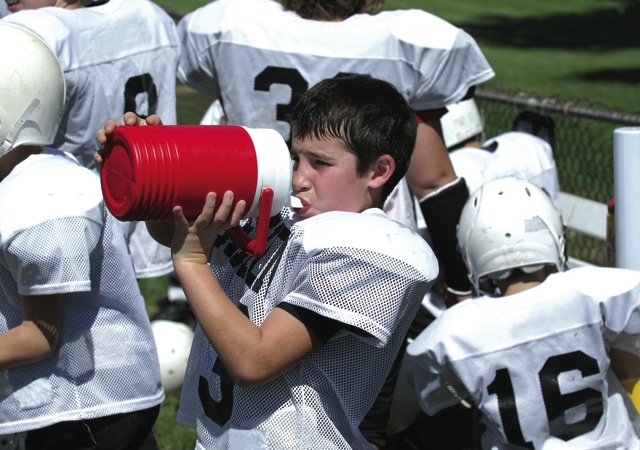Using the Functional Movement Screen to assess athletic ability
Over the last few years, the Functional Movement Screen (FMS) has become a popular clinical tool in the athletic industry. Physical therapist Gray Cook and athletic trainer Lee Burton designed it to capture fundamental movement and identify movement deficiency, limitations and asymmetries.
 This screen gives an athletic trainer or strength and conditioning coach an idea of what an athlete has to work on first, and what restrictions they have for an exercise regimen.
This screen gives an athletic trainer or strength and conditioning coach an idea of what an athlete has to work on first, and what restrictions they have for an exercise regimen.
The FMS is comprised of seven movements that require both mobility and stability. It’s not designed to isolate joint dysfunction. Instead, we’re trying to assess whether criteria is met and, if not, the individual may be at risk for injury.
The FMS has three possible outcomes:
- An acceptable screen, but does not guarantee the individual won’t get hurt.
- A screen that is not acceptable, but we can incorporate corrective strategies.
- Pain with any movement, requiring referral to a health care provider.
The seven movements are comprised of bilateral and unilateral movements requiring flexibility, stability and mobility, as well as sagittal and multi-planar movement. Each movement is scored zero to three. A zero is pain that raises red flags and requires a medical professional. The FMS is just a screen, and does not diagnose injuries.
It’s beneficial to be strict in this assessment, so most individuals score a two or one. A two suggests the individual can perform the movement with compensations or poor mechanics. A one is given if the individual cannot perform the test as directed. A three requires a perfect movement pattern.
If the assessor thinks the movement wasn’t bad, it suggests it wasn’t good. It warrants scoring on the conservative side.
Remember, we are not diagnosing. If an individual scores a one on a test, it does not mean they lack hip mobility or need ankle stability. Mike Boyle, a well-known strength and conditioning specialist, uses a great analogy to explain the process. The FMS screen is much like a screen separating rocks from dirt. The dirt falls through, but the rocks get stuck. The rocks are ones and zeroes. The twos and threes pass through.
From here, it’s imperative to consider the raw, final and total score. The highest score an individual can obtain is 21. Current research suggests a score of less than 14 puts the athlete at greater risk for sustaining an injury. Regardless of whether this is accurate, I’d rather look closer at the raw score of the five bilateral tests and the final scores.
For example, if an athlete receives a raw score of two for the left shoulder and a one for the right shoulder in the mobility test, a final score of a one does not tell me a lot. They could have scored a one on both shoulders. Instead, I can see there is a clear asymmetry between these two shoulders. I don’t know why they have this asymmetry, but it helps me with my corrective strategy breakout.
Research shows some evidence of males performing better on tests measuring core stability, whereas females tend to perform better on mobility and flexibility patterns. Although this is not conclusive data, it may provoke thought with regard to female athlete. If female athletes generally have more laxity than males, then it would make sense they perform better on tests assessing mobility and flexibility. As we know, an athlete with an excessive amount of laxity needs strength. In my eyes, the FMS is an excellent screen to educate the female athlete as to why strength training is so important.
After performing the screen, we’re one step closer to designing a strength training program. We can now begin to interpret the results through an algorithm. Remember, we are not fixing anything — we are addressing weak links. The general guideline is to start with mobility, since we never want to build stability over a mobility problem. Before beginning our corrective exercise breakout, we’ll first find any ones followed by asymmetries. Our focus is to address the ones first, and then retest to identify whether we eliminated the asymmetry.
To keep our algorithm simple, we’re going to use a traffic light method. Red light exercises are those we should avoid, yellow light exercises can proceed with caution, and green light exercises are safe for strength training and corrective in nature. If we find the trunk stability test is the first area we need to address, then we will take a look at our traffic light. We’ll know since the trunk stability test is performed in the sagittal plane and is a symmetrical upper-extremity motion, we can consider a pressing exercise or symmetrically loaded closed chain exercise as our red light. Our goal is to use our green light and some yellow light exercises to work our way up to successfully performing pressing exercises again. We must successfully use mobility, static and dynamic motor control exercises first.
These are corrective exercises athlete can do at home or can be mixed into training programs with their coaches. We should often retest to make sure correctives are working and if whether we’ve cleared up any asymmetries in addressing one test. It takes time to make these adjustments, but it’s time well spent.
Jen Morse, MS, CSCS, is the lead injury prevention specialist at The Micheli Center for Sports Injury Prevention. Learn more at www.themichelicenter.com.
The Functional Movement Screen (FMS) is an effective tool to help coaches and athletic trainers identify movement deficiency, limitations and asymmetries in athletes. Learn more about using it at www.functionalmovement.com.





